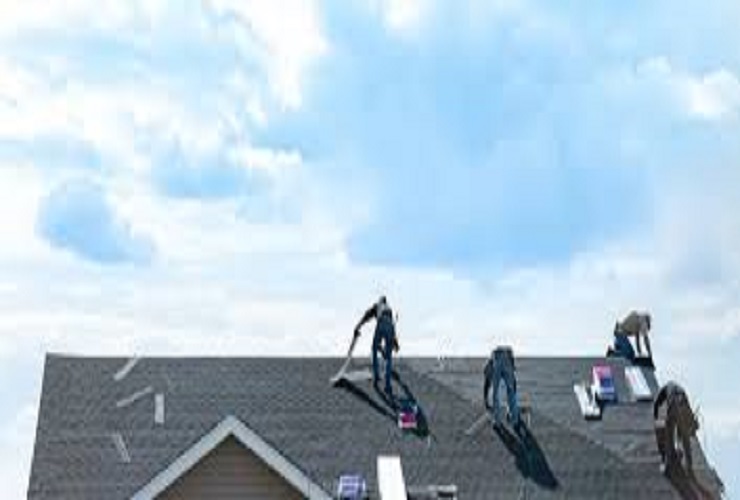Your roof is your home’s first line of defense against the elements. From scorching sun to torrential rain and heavy snow, weather conditions can significantly impact the health and longevity of your roof. Understanding how different weather patterns affect your roof and what you can do to mitigate damage is essential for maintaining its structural integrity.
One effective way to protect your roof, especially metal ones, is by applying a metal roof coating system. This solution is gaining popularity for its ability to shield roofs from various weather-related damages. Let’s delve into how weather affects your roof and explore strategies to protect it.
The Impact of Different Weather Conditions on Your Roof
1. Sun and Heat
Prolonged exposure to the sun can cause significant damage to your roof. The intense UV rays and heat can lead to:
- Material Degradation: Asphalt shingles may dry out and crack, while wooden shingles can warp.
- Fading: The color of your roof may fade over time due to UV radiation.
- Thermal Expansion and Contraction: Fluctuations between daytime heat and cooler nights can cause roofing materials to expand and contract, leading to cracks and weakening joints.
What to Do:
Regular inspections can identify early signs of heat damage.
Reflective roofing materials or a metal roof coating system can minimize the heat absorption and UV exposure, extending the life of your roof.
2. Rain and Moisture
Rain is one of the most common culprits of roof damage. It can lead to:
- Leaks: Small cracks and gaps in the roofing material can allow water to seep through, causing leaks.
- Mold and Mildew: Persistent moisture can lead to mold and mildew growth, affecting both your roof and the interior of your home.
- Structural Damage: Water can weaken wooden roof supports and cause rot.
What to Do:
- Keep gutters and downspouts clean to prevent water buildup.
- Inspect the roof regularly for signs of pooling water or leaks.
- Use a water-resistant coating to enhance your roof’s ability to repel moisture.
3. Wind
High winds can wreak havoc on your roof by:
- Dislodging Shingles: Strong gusts can lift or tear away shingles, leaving your roof exposed.
- Damaging Flashing: Wind can loosen the metal flashing around chimneys and vents, increasing the risk of leaks.
- Falling Debris: Windstorms often bring branches or other debris crashing onto roofs, causing physical damage.
What to Do:
- Trim overhanging branches to minimize the risk of debris damage.
- Secure loose shingles and flashing to prevent them from being blown away.
- Consider reinforced roofing materials in wind-prone areas.
4. Snow and Ice
Winter weather poses unique challenges for your roof, including:
- Ice Dams: When snow melts and refreezes at the roof’s edge, it can block proper drainage, leading to water buildup and leaks.
- Excess Weight: Heavy snow accumulation can strain the roof structure, potentially causing it to collapse.
- Freeze-Thaw Cycle: Water can seep into small cracks, freeze, and expand, worsening the damage.
What to Do:
- Ensure proper insulation and ventilation to prevent ice dams.
- Remove snow buildup safely or hire professionals to do it.
- Use roofing materials designed to withstand cold weather, such as metal roofs with a protective coating system.
5. Hail
Hailstorms can cause immediate and visible damage to roofs by:
- Cracking Shingles: The impact of hail can crack or dent shingles, especially asphalt ones.
- Compromising Protective Layers: The granules on asphalt shingles may be stripped away, exposing the underlying material to further damage.
What to Do:
- Regularly inspect your roof after a hailstorm to check for damage.
- Consider impact-resistant roofing materials for areas prone to hail.
- Apply a metal roof coating system to protect metal roofs from dents and prolong their lifespan.
How to Maintain and Protect Your Roof
1. Regular Inspections
Schedule roof inspections at least twice a year—once in the spring and once in the fall. Look for signs of damage, such as missing shingles, cracks, or pooling water.
2. Clean Gutters and Downspouts
Clogged gutters can lead to water pooling on your roof, increasing the risk of leaks and damage. Clean them regularly to ensure proper drainage.
3. Apply Protective Coatings
For metal roofs, a metal roof coating system provides a durable barrier against weather elements. It reflects UV rays, repels water, and reduces the risk of corrosion, making it a valuable investment for long-term roof maintenance.
4. Trim Overhanging Trees
Trees with branches that hang over your roof can drop leaves, causing moisture retention and rot. Additionally, during storms, these branches can break and damage the roof.
5. Invest in Quality Materials
High-quality roofing materials are better equipped to withstand harsh weather conditions. Whether you’re installing a new roof or replacing an old one, prioritize materials that are durable and suited for your local climate.
The Benefits of a Metal Roof Coating System
Metal roofs are known for their durability and longevity, but they are not immune to weather-related damage. A metal roof coating system offers several advantages:
- Weather Resistance: The coating creates a protective layer that shields the roof from rain, wind, and UV rays.
- Energy Efficiency: Reflective coatings reduce heat absorption, lowering cooling costs during hot weather.
- Corrosion Prevention: The coating helps prevent rust and corrosion, particularly in areas with high humidity or frequent rain.
- Extended Lifespan: By reducing wear and tear, a coating system can add years to the life of your metal roof.
When to Call a Professional
While regular maintenance can prevent many issues, there are times when professional help is necessary. Call a roofing expert if:
- You notice persistent leaks or water stains on your ceilings.
- There is visible damage, such as missing shingles or cracks.
- You experience severe weather conditions that might have compromised your roof’s integrity.
Conclusion
Weather can take a significant toll on your roof, but proactive maintenance and protective measures can minimize the damage. Understanding how different weather conditions impact your roof enables you to prepare and protect it effectively.
A metal roof coating system is an excellent solution for preserving metal roofs, offering weather resistance, energy efficiency, and enhanced durability. By investing in regular inspections, quality materials, and professional services, you can ensure your roof remains a reliable shield against the elements for years to come.

